In recent years, the introduction of the exotic Asian Melastome (Melastoma
candidum) has been a source of concern as it is similar in appearance and often confused with the native Blue Tongue ( Melastoma malabathricum subsp. malabathricum ). The purple fruit of native Blue Tongue is sweet and edible, and once eaten, it turns tongues a blue-purple colour, hence the common name.
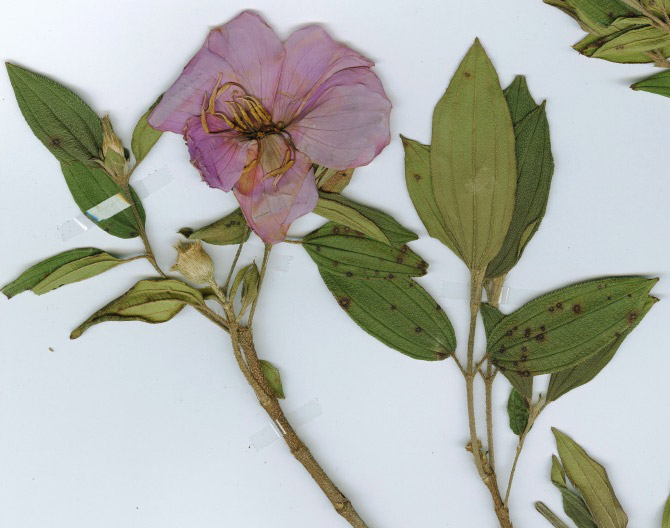
Asian Melastome, native to tropical Asia, is cultivated as an ornamental shrub. Readily spread by birds, it has become an invasive garden escapee in tropical and sub-tropical areas including in Australia, Hawaii and Southeast Asia. Although not a declared weed species in Australia, Asian Melastome is known to rapidly spread, naturalise and form dense thickets in a variety of habitats including eucalypt forests, open land and wetlands.
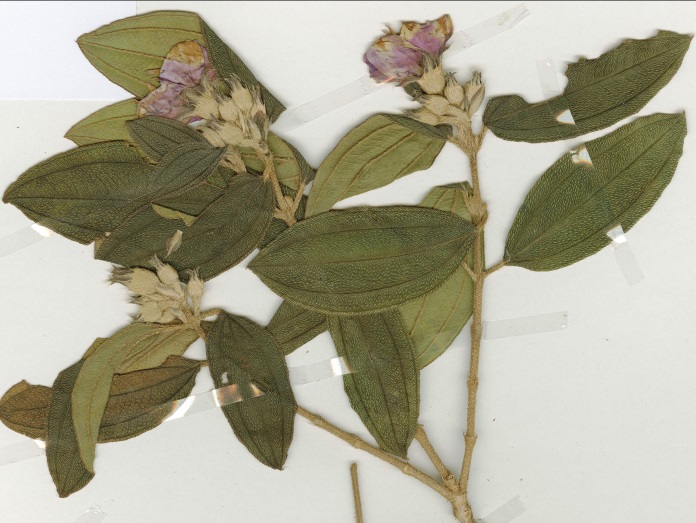
When purchasing Blue Tongue, check to see if the plant is in keeping with the diagnostic features outlined below. In particular, examine the veins on the leaves. It is important to examine several mature leaves to confirm the number of veins present as there can be some variation. Only the introduced species will have five distinct longitudinal veins. If you are not sure, contact your Land for Wildlife Officer or the Queensland Herbarium to have a plant sample positively identified.
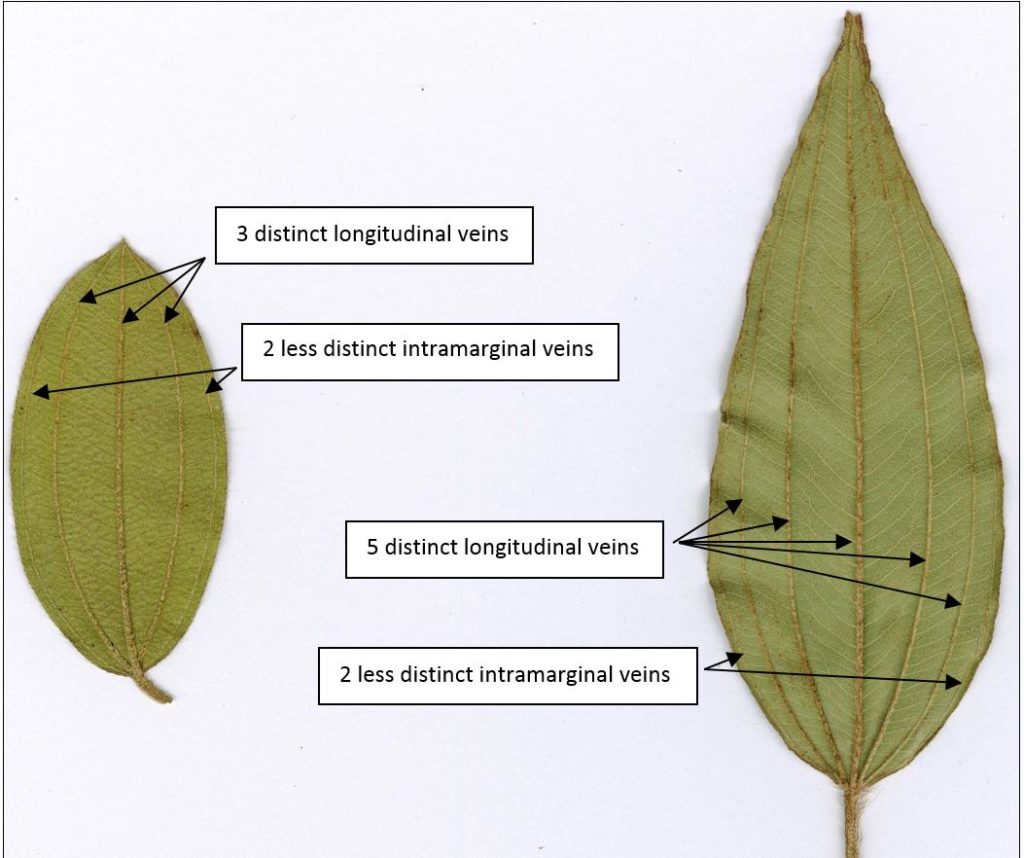
The recommended treatment for adult plants of Asian Melastome is the cut stump method with glyphosate 1:5 in water or Vigilant (Picloram) gel neat. Basal barking can also be effective with Fluroxypyr 333gL (e.g. Starane Advanced) 30ml per litre of diesel or other recommended mixing agent.
Article by Amanda Maggs Land for Wildlife Officer Brisbane City Council
Photos by Deborah Metters
Blue Tongue or Native Lassiandra
Melastoma malabathricum subsp. malabathricum
(was Melastoma affine )
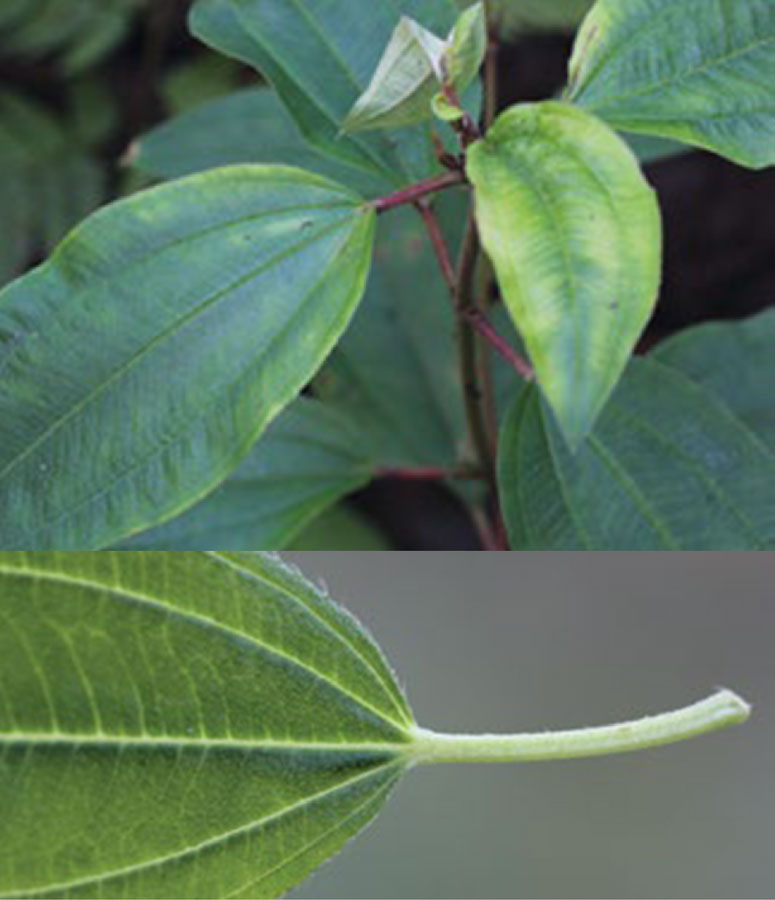
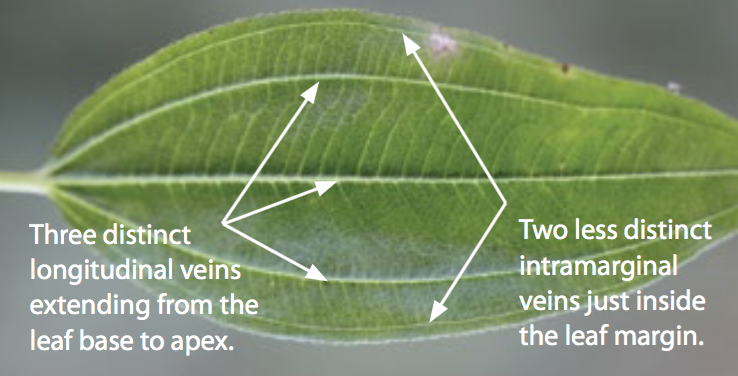
Leaves: Generally 3 distinct longitudinal veins and 2 less distinct intramarginal veins. Leaves hairy but thinner than Asian Melastome. Leaf stalks purple or white with short hairs.
Flowers: Pinkish purple flower (also a white form). Five petals about 20-30mm long. Flowers all year round.
Fruit: Red and green outside, purple on inside, hairy to 10mm.
Habit: Shrub 1-2 metres high, growing in moist areas such as gullies and freshwater wetlands.
Asian Melastome
Melastoma candidum
(also known as Melastoma septemnervium)

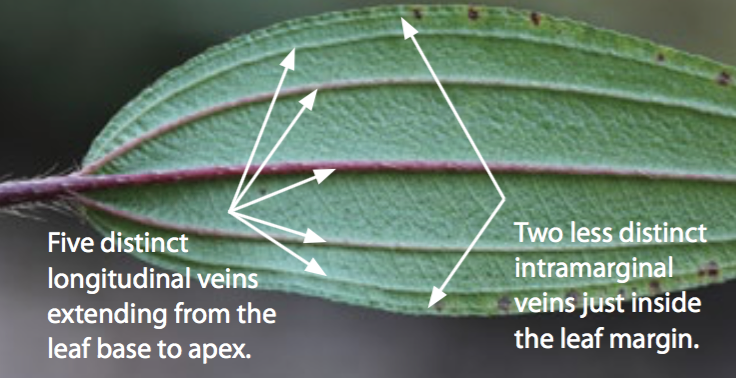
Leaves: Generally 5 distinct longitudinal veins and 2 less distinct intramarginal veins. Leaves hairy but thicker and stiffer than Blue Tongue. Leaf stalks purple or white with long hairs.
Flowers: More purple and a larger flower than the native Blue Tongue. Five petals about 25-32mm long.
Fruit: Bright raspberry red in colour.
Habit: Grows to 2 metres high and is more dense and robust than the native Blue Tongue.

The top two photos with no white space between, on both sides, appear to be identical and seem to be of M. candidum while the bottom two photos show the differences between the two species.
You are right, we will fix this. thanks for letting us know.
Where does Melastoma affine fit into this equation?
Hi Anna. Melastoma malbathricum used to be called M. affine. Its the same species, just a re-name.
I have recently moved to Ningi [4511] and for my own information I have been documenting the plants that are planted in the reserve around the Sandstone Lake. After looking at your article on Native Blue Tongue vs Exotic Asian Melastome I believe the species of Melastome planted in the reserve is the introduced Asian species. Should the Moreton Bay Regional Council or the department responsible for plantings be notified? I have taken photos of front & reverse sides of the leaves for your identification but [for some reason] can not copy & paste to this field.
Hi Lyn
Nice spotting. Yes, we would encourage you to write to your council and inform them of this. If you write to them, they will have to track your request and assign it to an officer. We hope it gets sorted.